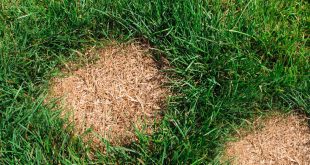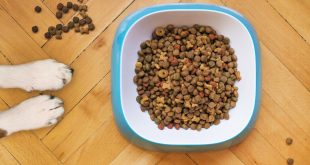This post may contain affiliate links. Please read our disclosure.
Do you have a pup that’s not eating as much as usual? Are you worried about your furry friend going too long without food? Understanding the facts and what to do when it comes to a dog not eating can help alleviate your worries. From how long can a dog go without food, to why they might stop eating in the first place, this article will provide everything you need to know!
Article Contents
Impact of Fasting on Dogs
Fasting is a popular practice for humans, but it can also be beneficial for dogs. When done correctly and in moderation, fasting can help your pup maintain their optimal weight and health. This type of fasting involves not feeding your dog any food or treats during certain hours of the day or days of the week.
It may seem counterintuitive to withhold food from our furry friends, however routine fasting has been linked to a number of positive health benefits for dogs. For example, when a dog’s digestive system gets regular breaks from processing food, its energy levels increase as does its mental clarity due to increased blood flow to the brain. A few other potential benefits include:
• Regulation of glucose levels – Fasting helps keep your pup’s bloodstream free from sugary spikes that come with frequent meal times
• Reduced risk of obesity – Regular fasting gives your pet time between meals which allows them burn off calories more efficiently
• Improved digestion – By giving your pet’s digestive system some time off each day you are allowing it time to reset itself so they don’t suffer from chronic indigestion or gastrointestinal issues
• Increased lifespan- Studies have shown that animals who fast live longer because it reduces oxidative damage caused by free radicals
It is important to note that not all types of fasting are suitable for every breed and age group – talk with a vet before deciding what type (if any) would work best for your pup. Furthermore, there should always be plenty water available especially if you decide on an extended period without food intake; dehydration can occur quickly if left unchecked!
Understanding a Dog’s Digestive System
Dogs, like humans, have a complex digestive system that helps them process the food they eat and extract essential nutrients. A dog’s digestion begins in the mouth where their sharp teeth break down the food into smaller pieces to make it easier for swallowing. From there, it enters their stomach where strong acids help break down proteins so that the body can absorb them.
Once through the stomach, partially digested food passes through to the small intestine which is longer than a human’s and much more efficient at absorbing nutrients from food. This is then passed on to the large intestine which absorbs any remaining water from what’s left of indigestible material before finally passing out of their system as waste matter via their rectum.
To ensure an efficient digestion process dogs need proper nutrition and regular exercise for healthy muscle tone; this allows everything to flow smoothly throughout its entire digestive tract. It also helps keep things moving along so that no toxins are allowed to build up in your pup’s gut and cause problems such as constipation or bloating. Additionally, you should also feed your pooch high-quality foods with natural ingredients such as fruits, vegetables and lean meats – these provide all of essential vitamins, minerals and other nutrients needed for good health!
How Long Can a Dog Go Without Food?
When it comes to a dog’s health, there are many questions about what the best practices for taking care of our furry friends. One of those is how long can a dog go without food? This is an important question as dogs have different dietary needs than humans. So, let’s take a closer look at this issue and see what we can learn.
First off, every dog is unique so their individual needs must be taken into consideration when making decisions regarding their nutrition and health. Generally speaking however, most healthy adult dogs should not go more than two or three days without eating any food. Puppies and senior dogs may need to eat more frequently due to their higher metabolism rates but still no longer than five days in total without some sort of sustenance.
The type of food that your pup eats also makes a difference in how much they should consume on a daily basis; wet kibble diets require less frequent meals whereas dry kibble diets typically require two or three feedings per day depending upon the size and breed of your pup. Furthermore, if you are switching from one type of diet to another then it’s important to do so gradually over several weeks in order for your pet’s digestive system time adjust accordingly. Lastly, it’s always wise consult with your veterinarian before changing up anything related to your pup’s nutrition – just like us humans!
Symptoms of Malnutrition in Dogs
Malnutrition can be a serious issue for dogs, and owners should keep an eye out for any signs that their pup may not be getting the proper nutrition. The effects of malnutrition will vary depending on how severe it is, but some common symptoms to look out for include:
– Weight loss or failure to gain weight – If your pup has been losing significant amounts of weight in a short time span, this could be an indication of malnutrition. Similarly, if they’re not gaining any weight despite having access to food and water, they may also be suffering from insufficient nourishment.
– Dull coat and brittle fur – Healthy dogs have shiny coats that are kept sleek with proper nutrition. Malnourished pups tend to have dull fur that looks dry and brittle due to lack of adequate nutrients like proteins and fats.
– Lethargy or low energy levels – A healthy dog should always appear active and energetic throughout the day; however, if you notice your pup constantly sleeping during times when he would normally play or take walks with you, it could indicate a problem with his diet. Additionally, extreme hunger can lead to decreased activity as pups become too weak from malnourishment to move around much at all.
– Weakness in muscles – Another sign that your pup isn’t getting enough nutrients is when their muscles appear weaker than usual. You might notice them being less able to jump up onto furniture or climb stairs due to weakened muscles caused by inadequate protein intake over time.
– Poor appetite – Dogs who don’t get enough vitamins and minerals through their diets often won’t feel hungry anymore because they aren’t receiving the necessary nutrients needed for growth & development; furthermore this symptom can also cause nausea which leads them away from eating anything at all! If you see your pet struggling more than normal while trying eat meals then there’s likely something wrong with what they’re consuming nutritionally speaking & further action needs taken right away!
Causes for Prolonged Fasting in Dogs
Fasting for prolonged periods of time can be dangerous for our canine companions. While fasting is sometimes necessary for medical reasons, it should not be done haphazardly without the supervision of a veterinarian. There are several common causes that may lead to extended periods of fasting in dogs.
One cause of extended fasting in dogs is illness or injury. When a dog is sick or has been injured they often lack the appetite needed to maintain their energy levels and health. In these cases, veterinary care is important as they may need medication or other treatments to help them recover and get back on track with eating again. Even if an animal appears healthy, prolonged bouts of fasting could signal underlying issues such as parasites or digestive disorders which require attention from your vet before feeding can resume normally.
Another potential cause for fasts lasting longer than usual could be related to stress and anxiety in certain pets who have difficulty adjusting to changes in routine or environment like when moving into a new home. Dogs who experience separation anxiety may stop eating when left alone during the day; this type of situation requires special attention from owners so that encourage normal eating habits even when apart from their pet parent/s . Additionally, older animals tend to lose interest in food more quickly due to age-related changes like decreased sense of smell and taste making it difficult for them ingest enough nutrition even when given access to high quality meals regularly throughout the day..
In conclusion, there are many different possible causes that might contribute towards why your dog isn’t eating which include illness/injury, stress/anxiety triggers and natural aging process among others – all these scenarios require further investigation by your vet so make sure you reach out if you suspect any issue with your pup’s diet!
Guidelines for Reintroducing Food to Starving Dogs
Reintroducing food to a starving dog can be a difficult process. It requires patience, consistency, and understanding of the animal’s needs and limitations. To ensure success in feeding your dog again, there are a few key steps that should be taken:
First off, it is important for pet owners to consult with their veterinarian before proceeding with any kind of reintroduction plan. This will allow them to assess the condition of the dog and determine what type of diet would best suit their individual needs as well as provide advice on how much food should be given at each mealtime. A vet may also suggest supplements or other treatments if needed.
Once you have consulted with your vet and obtained an appropriate diet plan for your furry friend, it’s time to begin introducing small amounts of food gradually over several days or weeks until the desired amount has been reached. During this period, water intake should be closely monitored and increased slowly as needed; however too much water could cause more harm than good so care should always be taken here. Additionally, dogs must never be left alone while eating due to potential risks such as choking or overeating – supervision is key! Lastly but certainly not least importantly, it’s essential that once they are back up on their feet health-wise from good nutrition practices that pet owners continue providing adequate meals regularly (in line with vets advice) so that these animals remain healthy long term!
Precautionary Measures for Preventing Long-Term Fasts
The dangers of long-term fasting are real. It can cause severe dehydration and electrolyte imbalances, as well as weaken the heart and other vital organs. To avoid such risks, it is essential to take precautionary measures when going on a fast for an extended period of time.
One of the most important things one can do is consult their doctor before starting any kind of dietary restriction or change in eating habits. A medical professional will be able to review your health history and provide you with guidance about how best to structure a safe fasting plan that is tailored to your individual needs. Additionally, they may recommend lab tests prior to beginning the fast in order to check for nutrient deficiencies or other signs that could indicate underlying health problems which could be exacerbated by fasting.
In addition to consulting a doctor, there are some simple steps one can take while they are fasting in order ensure safety:
– Monitor hydration levels closely – drink plenty of water throughout the day even if you’re not feeling thirsty; consider supplementing with electrolytes if needed
– Avoid prolonged exposure to heat or intense exercise during long-term fasts; these activities increase risk for dehydration and should only be done under close supervision from a healthcare provider
– Pay attention for signs that something isn’t right – dizziness, lightheadedness, fatigue; if experienced during longer fasts contact your healthcare provider immediately
– Make sure you’re getting enough minerals from whole food sources while still maintaining calorie restriction (if applicable); certain vitamins/minerals like potassium & magnesium may need extra support due extended periods without meals
Taking proper precautions before engaging in long-term fasts can help prevent serious complications down the line related to poor nutrition or dehydration. Following up with regular visits with your primary care physician throughout this process will also give you peace of mind knowing that all necessary steps have been taken towards achieving maximum benefit from this practice!
Wrap up!
Overall, fasting can be dangerous for dogs and should be avoided unless medically necessary. If your dog does need to fast for an extended period of time, it is important to carefully reintroduce food into their diet with the guidance of a veterinarian. It is also essential to monitor them closely during this process as they may become malnourished or suffer from other health issues if not done correctly. Taking precautionary measures such as keeping track of their eating habits and providing nutritious food on a regular basis can help keep your pup healthy and happy throughout their life.
FAQ Dogs Going Without Food
How Long Can a Dog Go Without Food?
The answer to this question depends on a variety of factors, including the size and age of your dog. Generally speaking, an adult dog can go three to five days without food, although younger dogs may need to eat more frequently. However, it is always best to consult with your veterinarian if you are concerned about your pet’s lack of appetite or extended fasting periods.
What should I feed my dog?
When deciding what type of food is right for your pup, it’s important that you consider their individual needs as well as any dietary restrictions they may have due to medical conditions or allergies. The safest way forward is by consulting with a vet who will be able to recommend the best diet for them based on their lifestyle and health requirements.
How often should I bathe my dog?
The frequency of bathing will depend entirely on the breed and lifestyle of your pup; some breeds require baths more often than others due to their coat type or skin sensitivity. As a general rule though, most healthy dogs only need occasional baths every few months unless otherwise advised by a vet or groomer.
How much exercise does my dog need?
Regular activity and exercise are essential for keeping your pup in good physical condition – but just like humans, different pups have different energy levels which means that each one requires varying amounts of physical activity! Typically speaking however; most healthy adult dogs should enjoy at least 30 minutes (2 x 15 minute) walks per day plus plenty of playtime indoors/outdoors throughout the day too!
Is there anything I shouldn’t feed my pup?
Any human foods containing high salt content such as crisps chips etc., chocolate (due its toxicity), bones from cooked meat (as these can splinter into sharp pieces), onions/garlic (can cause stomach upsets)and grapes/raisins (can cause kidney damage). It’s also important not give overly fatty treats such as bacon & sausages – so stick to low-calorie snacks made especially for dogs instead!
 Petnile Comprehensive Pet Care Guides
Petnile Comprehensive Pet Care Guides



